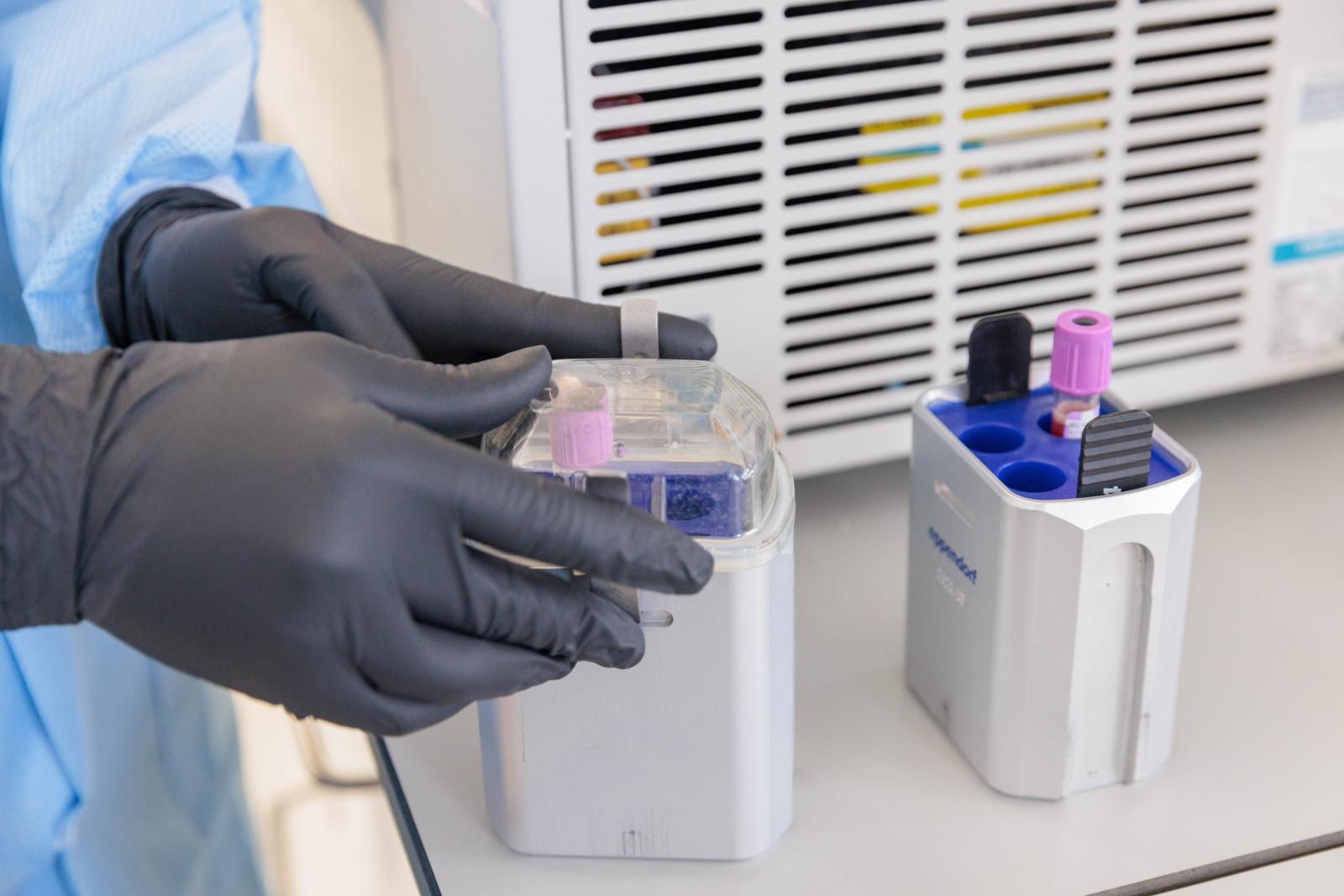Preventing Aerosol Production
Examples of Aerosol-Producing Activities in the Lab
- Carelessly removing gloves
- Pouring liquids
- Removing (“popping off”) stoppers
- Opening lyophilized cultures, snap top tubes, bottles
- Blowing out pipettes
- Shaking or vortexing open tubes, stirring
- Dropping/breakage of culture containers
- Flaming inoculating needles, loops, or slides
- Inserting a hot loop into a culture
- Pulling needles out of septum, filling a syringe
- Centrifugation steps such as filling centrifuge tubes, removing plugs or caps from tubes after centrifugation, removing supernatant, resuspending sedimented pellets, breakage of tubes during centrifugation, and centrifugation itself
- Sonicating, homogenizing, blending, grinding, cell disruption with French press
- Cell sorters
- Vacuum and aspirating equipment
- Intranasal inoculation of animals
- Cage cleaning, changing animal bedding
- Harvesting infected material from animals, eggs, and other virology procedures
- Necropsies of infected animals
Safe Work Practices to Minimize the Creation of and Exposure to Aerosols
Laboratory workers should learn and follow (as appropriate) these practices. Using a combination of the appropriate safety equipment and safe procedures is the primary method to minimize the creation of and exposure to aerosols.
Lab Safety Equipment to Protect Personnel from Aerosols
- A certified biological safety cabinet (class I or II) is the primary barrier to protect worker from aerosols if working with RG2 or higher agents
- Centrifuges with safety centrifuge cups
- Vacuum line trap and filter systems are used to protect the vacuum system from aerosols
Safe Work Practices for Centrifugation
- Routinely inspect centrifuge to ensure that leakage is not occurring
- Do not overfill centrifuge tubes. Wipe the outside of the tubes with disinfectant after they are filled and sealed
- Centrifugation may be performed in a centrifuge that is contained within a biological safety cabinet or other physical containment device
- If a whole centrifuge containment device is not available, internal aerosol containment devices (e.g., sealed canisters, safety cups or buckets with covers, heat sealed tubes or sealed rotors, etc) should be used
- Aerosol containment devices should be removed from the centrifuge and opened in a biological safety cabinet. If a biological safety cabinet is unavailable, a minimum of 10 minutes settling time should be allowed before opening
Safe Work Practices for Blending, Sonicating, Grinding, and Lyophilizing
- Operate blender, sonicator, and grinder in a biological safety cabinet, or place a towel moistened with disinfectant over the top of blender, grinder, or sonicator
- Use safety blenders designed to prevent leakage
- If leak-proof blender is not available, regularly inspect the bottom of the blender for leakage
- Avoid glass blenders
- Allow aerosols to settle for at least 5 minutes before opening blender
- Filter lyophilizer vacuum pump exhaust through HEPA filters or vent into a biological safety cabinet
- Autoclave or disinfect all equipment promptly after use
Safe Work Practices for Pipetting
- Drain a pipette with tip against the inner wall of the receiving vessel. Never forcibly expel any hazardous material from a pipette
- Carefully eject the disposable pipette tips to minimize aerosol formation. A wetted towel in the bottom of the dispensing container (which is often a glass beaker) will keep the pipette tip from bouncing around in the container, thereby minimizing aerosol production
- Place reusable pipettes horizontally in a pan filled with enough liquid disinfectant to completely cover them
- Mouth pipetting is prohibited; mechanical pipetting devices are used
Other Safety Precautions
- Minimize air bubbles when filling a syringe. Place a pad moistened with disinfectant over the tip of the needle when expelling air
- Use a shielded electric incinerator or hot bead sterilizer to sterilize inoculating loops. Disposable plastic loops and culture needles are good alternatives to open flames
- If a spill occurs that may generate aerosols, leave the area, close the door, wait 30-60 minutes to allow dissipation of aerosols. See the GW biosafety manual for spill cleanup
- Wear gloves when handling infectious materials, or infected animals
PDF version for your lab's biosafety manual.


